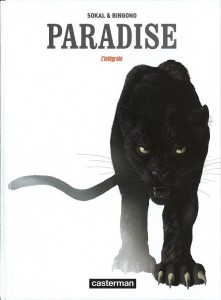
Because much of Africa’s interior remained unknown to Europeans till quite late in colonial history, it offered an arena for the imagination in scientific romances written around the end of the nineteenth century. In contemporary Franco-Belgian BDs it has continued to do so.
Absence of knowledge, about either a place or a period, provides a space in which to project the imagination. It’s no accident that Britain’s richest corpus of legend and romance – that centred on King Arthur – is set in the period – the fifth to sixth century – for which there’s least historical record. When characters enter a region unknown to the outside world, then, in the terms of mythologist Joseph Campbell, they cross a threshold into a realm of adventure where wondrous things may be encountered.
Thus, late Victorian writers like H. Rider Haggard could give free rein to their imagination in locating novels such as She and King Solomon’s Mines in the African interior. The possibilities to do this closed down as Africa became better known and the colonial associations of this kind of fiction became problematic. I was therefore intrigued to discover, early in my explorations of BDs, two recent series that use an African setting in exactly this way.
Both are displaced a little way into the past. Kenya by Rodolphe and Leo is explicitly set in 1940s Kenya. Its protagonist is an English secret agent, Kathy Austin, who’s come to investigate some mysterious occurrences that turn out (this is not really a spoiler) to involve both prehistoric animals and alien visitors. Sokal and Bingono’s Paradise is less specific in place and date. Its setting is a fictitious African country that encompasses both Moorish and black African elements, perhaps analogous to Mauretania. The kind of technology depicted and the drama of a socialist coup against a despotic regime are suggestive of the 1960s or 1970s. The story is not science-fictional like that of Kenya, yet the unknownness of this country, plainly off the beaten path of Western knowledge, permits imaginative elements such as a tribe who live on a Lothlorien-like system of flets in the trees, and fanciful animals – a bipedal form of camel, an elephant-like pachyderm with four short tusks.
The five albums of Kenya are exquisitely drawn and coloured in a crisp style that reminds me of the illustrative art of the period in which it’s set. Paradise is drawn in a looser style, beautiful in the first two albums, a tad hastier in the latter two, but ultimately allowing greater depth of feeling. As for the colonial problematique, in Kenya the colonial milieu is merely a setting, neither endorsed nor critqued; in Paradise the tensions between Europe and Africa are a conscious theme, embodied in a complex and sympathetic protagonist of mixed parentage.

Comments